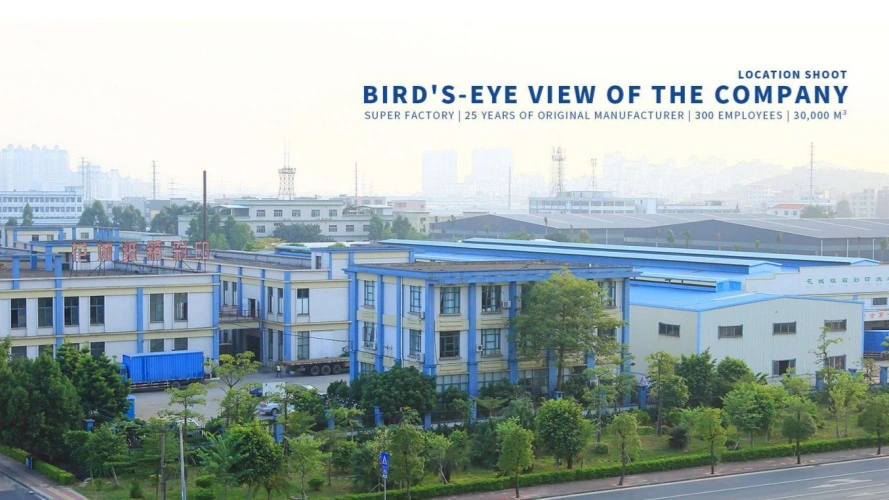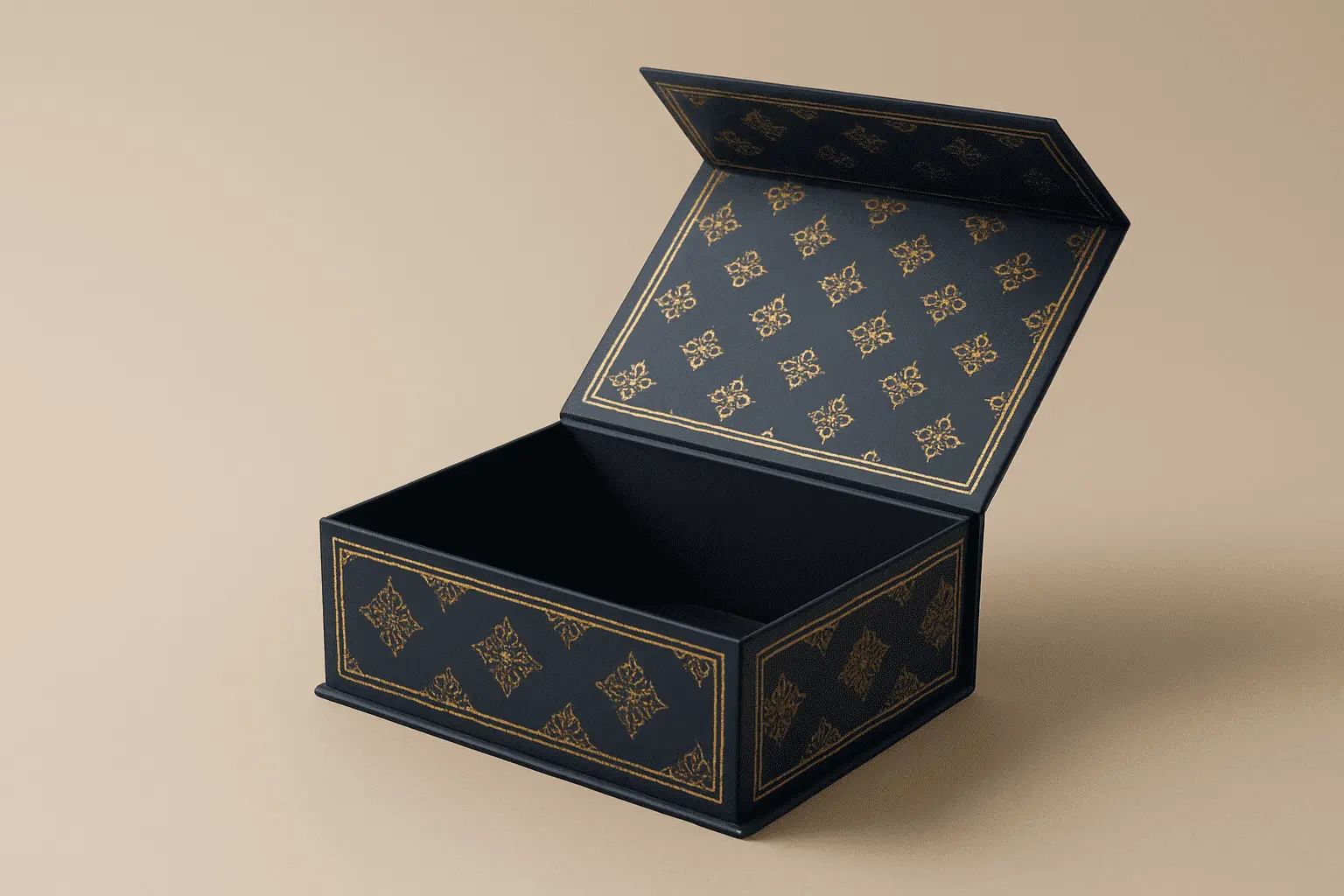Choosing Between Rigid and Foldable Boxes: What’s Best for You
Imagine launching your premium skincare line only to discover your packaging choice is bleeding money through excessive shipping costs while failing to create the luxury impression your brand deserves. This scenario haunts countless businesses daily, caught between the durability demands of rigid boxes and the cost-effectiveness of foldable boxes. The packaging decision extends far beyond aesthetics—it directly impacts your bottom line, brand perception, storage efficiency, and customer unboxing experience. Understanding the critical differences between these packaging solutions empowers you to make informed decisions that align with your product requirements, budget constraints, and brand positioning strategy.

Understanding Foldable Boxes: The Versatile Solution
Foldable boxes, also known as folding cartons, represent the backbone of modern packaging solutions across diverse industries. These boxes offer great versatility for a low unit cost, making them far more economical as they demand less packaging material and can be stored flat, which reduces costs. The fundamental appeal of foldable boxes lies in their space-efficient design that transforms from flat sheets into three-dimensional containers through strategic folding and gluing processes. The manufacturing process for foldable boxes involves several critical stages, beginning with the selection of appropriate substrate materials. Premium options include SBS C1S (Solid Bleached Sulfate – Coated One Side), which provides an exceptionally smooth white printing surface ideal for high-quality graphics and branding elements. This material choice ensures excellent printability while maintaining structural integrity throughout the product lifecycle. The coated surface supports vibrant color reproduction and fine detail reproduction, essential for brands seeking to create memorable first impressions. Advanced printing technologies enhance the visual appeal and functional performance of foldable boxes significantly. UV coating applications, whether spot or overall coverage, create high-gloss finishes with tactical contrast that elevates perceived value. Hot foil stamping delivers premium metallic sheens in gold, silver, or custom colors, perfect for luxury brand positioning. Embossing and debossing techniques add three-dimensional relief elements that provide tactile interest and depth perception, creating engaging sensory experiences for consumers during product interaction.
-
Cost-Effectiveness and Shipping Advantages
The economic advantages of foldable boxes extend well beyond initial manufacturing costs. Folding cartons have the advantage of being shipped flat, saving the cost of shipping compared to shipping rigid boxes, and are produced with fewer processes at lower cost. This flat-shipping capability translates to substantial logistics savings, particularly for businesses operating across multiple distribution channels or geographic markets. Storage efficiency represents another compelling advantage of foldable boxes in warehouse operations. The flat-pack design minimizes storage footprint requirements, allowing businesses to maintain larger inventory volumes within existing warehouse spaces. This efficiency becomes increasingly valuable as real estate costs continue rising and storage optimization becomes critical for operational profitability. Additionally, the reduced storage requirements facilitate better inventory management practices and enable more responsive supply chain operations. The assembly process for foldable boxes has been streamlined through advanced die-cutting technologies and precise creasing applications. Modern folding cartons feature strategically placed crease lines that facilitate clean, accurate folds without cracking coatings or compromising structural integrity. This attention to manufacturing detail ensures consistent assembly performance across high-volume production runs while maintaining visual quality standards.
Exploring Rigid Box Construction and Applications
Rigid boxes, alternatively known as setup boxes or rigid setup boxes, represent the premium tier of packaging solutions designed for applications demanding maximum structural integrity and luxury presentation. Rigid boxes have a sturdier nature and do not get mold or collapse as folding cartons do, used for higher-end products where perceived value is important and for heavier products that need extra support. The construction methodology for rigid boxes involves bonding paperboard or chipboard substrates to create three-dimensional structures before covering with decorative materials. The material selection for rigid boxes typically involves grey chipboard or duplex chipboard as the structural foundation. Grey chipboard, manufactured by compressing recycled pulp under high heat and pressure, delivers excellent resistance to bending and compression while maintaining cost-effectiveness through recycled content utilization. The multi-ply construction provides sturdy support essential for packaging applications involving heavier products or requiring extended shelf life performance. Duplex chipboard offers enhanced visual appeal through its dual-layer construction featuring smooth, bright white coating bonded to recycled-pulp cores. This material combination delivers superior print results with sharp color reproduction while maintaining structural advantages. The white coated face supports offset, digital, UV, and foil-stamping processes, enabling sophisticated finishing techniques that create premium brand experiences.
-
Premium Finishing Options for Rigid Boxes
Rigid box construction accommodates extensive customization through advanced finishing techniques that elevate brand presentation standards significantly. Combination finishing approaches, such as spot UV coating combined with embossing applications, create shiny raised elements that enhance both visual shine and tactile relief simultaneously. These multi-layered finishing techniques demonstrate attention to detail that resonates with quality-conscious consumers and reinforces premium brand positioning. Holographic foil stamping represents an cutting-edge finishing option that laser-etches microscopic holographic patterns onto foil substrates before heat or UV curing applications. This technique locks in vibrant, angle-shifting colors with subtle texture variations that provide premium anti-counterfeiting properties while creating distinctive visual impact. The holographic elements catch light dynamically, creating engaging visual experiences that differentiate products within competitive retail environments. Lamination applications, including both gloss and matte variations, enhance scratch resistance, moisture protection, and overall durability performance. Gloss lamination yields shiny surfaces that amplify color vibrancy and create premium visual appeal, while matte lamination delivers low-sheen, soft-touch effects that convey sophistication and elegance. These protective coatings extend product lifecycle performance while maintaining visual quality throughout distribution and retail display periods.
Material Considerations for Optimal Performance
The selection of appropriate substrate materials fundamentally determines the performance characteristics, visual appeal, and cost structure of both rigid and foldable boxes. Understanding material properties enables informed decision-making that balances performance requirements with budget constraints and sustainability objectives. Different applications demand specific material characteristics, from food-safe requirements to luxury presentation standards. SBS C2S (Solid Bleached Sulfate, Coated Two Sides) represents the premium material choice for applications requiring superior visual performance and reliable converting properties. The dual-side coating ensures excellent print quality on both surfaces, enabling professional output for structural packaging designs with inner print requirements. This material choice proves essential for applications where both exterior and interior surfaces contribute to brand experience and product protection. CCNB (Clay Coated News Back) offers economical alternatives for budget-conscious applications while maintaining reliable print performance standards. The clay-coated front surface provides smooth finishes suitable for high-quality printing, while the grey recycled back contributes structural strength and environmental sustainability. This material choice balances cost-effectiveness with performance requirements, making it ideal for applications prioritizing value optimization over premium presentation.
-
Sustainable Material Options
Environmental consciousness increasingly influences material selection decisions as brands respond to consumer preferences for sustainable packaging solutions. Brown kraft paper, manufactured from unbleached wood pulp, retains natural brown hues and visible fiber textures that convey authenticity and environmental responsibility. The high tensile strength and tear-resistant properties make brown kraft suitable for applications requiring durability while maintaining eco-friendly positioning. Metallic substrates created through foil lamination or metallic-effect coating applications deliver vivid reflective finishes that elevate perceived luxury and sophistication. The high-gloss, mirror-like surfaces create exceptional shelf appeal that distinguishes products within retail displays and trade show environments. These materials remain compatible with spot UV, hot-foil stamping, and embossing techniques, enabling layered visual effects that maximize brand impact. The recyclability characteristics of different substrates influence long-term environmental impact and align with corporate sustainability initiatives. Many modern paperboard options feature FSC certification and meet contemporary environmental packaging standards, enabling brands to communicate environmental responsibility while maintaining performance requirements. Understanding these sustainability factors helps businesses align packaging choices with broader corporate values and consumer expectations.
Innovative Collapsible Rigid Box Solutions
The packaging industry has developed innovative hybrid solutions that combine the structural integrity of rigid boxes with the shipping efficiency of foldable designs. Collapsible rigid boxes represent this evolution, offering patented structures that maintain premium presentation while delivering substantial logistics savings. These solutions address the traditional trade-offs between rigid box quality and foldable box efficiency through engineering innovation. Advanced collapsible rigid box designs utilize proprietary structural engineering that enables flat-shipping while maintaining rigid box aesthetics and functionality. The development process involves extensive research and development investment, with patent protection ensuring competitive advantages for innovative manufacturers. These structures demonstrate how technical innovation can resolve seemingly incompatible requirements through creative engineering approaches. The size variations available in collapsible rigid boxes cater to diverse product requirements while maintaining consistent quality standards. Large sizes accommodate magnetic gift boxes with product heights ranging from 100-150mm, suitable for electronics, luxury cosmetics, or premium accessories. Medium configurations handle product heights from 50-100mm, ideal for jewelry, watches, or compact electronics. Tiny options serve products with heights from 20-50mm, perfect for small luxury items, samples, or promotional products.
-
Cost Optimization Through Design Innovation
The economic advantages of collapsible rigid boxes extend significantly beyond traditional rigid box solutions. These innovative structures can save more than 60% of shipping and storage costs compared with conventional rigid gift boxes, while saving 20%-30% costs compared with standard collapsible rigid box alternatives. The substantial cost savings result from optimized shipping volumes, reduced warehouse space requirements, and streamlined logistics operations. Production efficiency improvements through automatic visual positioning box production lines ensure short production times while maintaining stable quality standards. The manufacturing processes incorporate advanced quality control systems that monitor dimensional accuracy, structural integrity, and aesthetic consistency throughout production runs. This technological integration enables high-volume production capabilities while maintaining the premium quality standards associated with rigid box applications. Surface finishing compatibility remains comprehensive across collapsible rigid box applications, supporting cold and hot foil stamping, UV coating, frosted touch effects, and embossing techniques. This finishing versatility enables brands to maintain premium aesthetic standards while capturing the economic advantages of innovative structural design. The ability to apply sophisticated finishing techniques ensures that cost optimization does not compromise brand presentation requirements.
Industry Applications and Selection Criteria
Different industries present unique packaging requirements that influence optimal box selection between rigid and foldable alternatives. Understanding these industry-specific considerations enables more targeted decision-making that aligns packaging choices with market expectations and functional requirements. The selection process must evaluate multiple factors simultaneously, including cost constraints, brand positioning, product protection needs, and distribution channel requirements. Food industry applications often prioritize foldable boxes due to high-volume production requirements, cost sensitivity, and regulatory compliance needs. The food-safe characteristics of materials like SBS C2S, combined with cost-effective manufacturing processes, make foldable boxes ideal for cereal products, snack foods, and frozen items. However, premium food products, artisanal items, or gift food selections may benefit from rigid box presentation to communicate quality and justify premium pricing structures. Cosmetics and personal care industries frequently utilize both packaging types depending on product positioning and price points. Mass market products typically employ foldable boxes to optimize costs while maintaining professional presentation standards. Luxury skincare, premium fragrances, and high-end cosmetics often require rigid boxes to create appropriate unboxing experiences and reinforce premium brand positioning. The tactile qualities and structural integrity of rigid boxes align with consumer expectations for luxury personal care products.
-
Electronics and Technology Product Packaging
Electronics packaging presents complex requirements balancing protection, presentation, and cost considerations across diverse product categories. Consumer electronics, mobile devices, and computer accessories often utilize rigid boxes to convey innovation, quality, and premium positioning within competitive markets. The structural integrity provides essential protection for delicate electronic components while creating memorable unboxing experiences that enhance perceived value. However, commodity electronics, replacement parts, and accessories may benefit from foldable box solutions that optimize logistics costs while maintaining adequate protection levels. The decision factors include product value, target market positioning, distribution channel requirements, and competitive positioning within specific market segments. Understanding these nuanced requirements enables more strategic packaging decisions that support broader marketing objectives. The integration of smart packaging technologies, including QR codes, NFC chips, or authentication features, influences box selection by determining required structural characteristics and finishing capabilities. Rigid boxes often accommodate these technologies more effectively through superior dimensional stability and finishing compatibility, while foldable boxes may require design modifications to ensure reliable technology integration throughout the distribution process.
Conclusion
Choosing between rigid and foldable boxes requires careful evaluation of multiple factors including cost optimization, brand positioning, product protection needs, and distribution requirements. While foldable boxes excel in cost-effectiveness and shipping efficiency, rigid boxes deliver superior premium presentation and structural integrity. Innovative collapsible rigid box solutions increasingly bridge this gap, offering hybrid benefits that optimize both economics and aesthetics for discerning brands.
Cooperate with GUANGZHOU FETCHING COLOR PRINTING & PACKAGING LTD.
Established in 1999, Guangzhou Huadu Fetching Color Printing and Packaging Co., Ltd. brings over two decades of expertise to packaging solutions across diverse industries. Our 30,000㎡ facility houses advanced machinery including KBA106-(9+1) UV printing machines, Heidelberg XL162-6L printing equipment, and AI gift box production lines, enabling comprehensive manufacturing capabilities for foldable boxes and rigid alternatives.
Our team of over ten packaging engineers provides specialized services in new material applications, packaging structure development, artwork design, and process technology optimization. We maintain certifications including ISO14001-2015, ISO9001-2015, Smeta, G7 Color Management, FSC, and Disney certification, demonstrating our commitment to quality standards and environmental responsibility. With over 1,000 loyal customers and 300+ employees, we deliver customized packaging solutions that transform your success into our shared achievement.
Ready to discover the perfect packaging solution for your brand? As a leading China Foldable Boxes factory and China Foldable Boxes supplier, we offer competitive Foldable Boxes pricing alongside High Quality Foldable Boxes manufacturing. Whether you need China Foldable Boxes wholesale solutions or custom Foldable Boxes for sale, our expertise ensures optimal results. Contact us today at public@fetchingprinting.com to explore how our innovative packaging solutions can elevate your brand presentation while optimizing costs and logistics efficiency.
FAQ
Q: What are the main cost differences between rigid and foldable boxes?
A: Foldable boxes typically cost 20-40% less than rigid boxes due to simpler manufacturing processes, flat shipping capabilities, and reduced material requirements.
Q: Which box type offers better product protection during shipping?
A: Rigid boxes provide superior protection for fragile or heavy items, while foldable boxes offer adequate protection for lighter products with proper design and material selection.
Q: How do environmental considerations affect box selection?
A: Both options can be eco-friendly when using recyclable materials and sustainable production processes, though foldable boxes generally require less material and energy.
Q: What factors determine the best box choice for premium products?
A: Consider brand positioning, unboxing experience requirements, product value, target market expectations, and budget constraints when selecting between rigid and foldable options.
References
1. "Packaging Design and Production Guidelines for Consumer Goods" by International Packaging Association, 2023
2. "Sustainable Packaging Solutions in Modern Commerce" by Environmental Packaging Council, 2024
3. "Cost Analysis of Packaging Materials and Manufacturing Processes" by Packaging Economics Research Institute, 2023
4. "Consumer Psychology and Packaging Design Impact Studies" by Market Research Association, 2024

Based on your location and order quantity, you will have the opportunity to receive a limited time free shipping promotion!

Corporate Purpose
